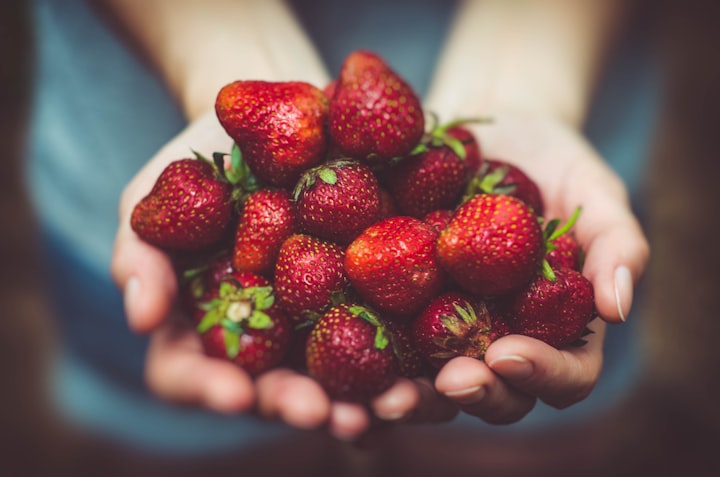The 10 healthiest foods you should eat as much as possible
in 2022.
Some foods have more nutrients than others, and this is a crucial part of a balanced diet. In order to get the most out of your meals, we've put together this list of 10 foods that are both healthy and delicious, as well as have the potential to lower your risk of illnesses like cancer, Alzheimer's, and cardiovascular disease. You may even be able to include all ten into a single dish if you're feeling very daring.
Turmeric
Turmeric, which comes in the form of a powder (spice) from this vivid orange plant native to Asia and Central America, has also received scientific momentum for its various health advantages. As an anti-inflammatory and pain-relieving agent for arthritis sufferers, turmeric has also been found to help prevent certain cancers, work as an antioxidant to support liver health, and promote digestion. As Dr. Andrew Weil's Anti-Inflammatory Food Pyramid recommends, it's no surprise that turmeric is included.
Beans and legumes
Fabaceae fruits and seeds, which are little yet formidable, are often underrated for their nutritious density. One cup of cooked chickpeas (164 g) contains 14.5 g of protein, about three-quarters of the daily required folate consumption, and healthy doses of copper, manganese, and iron. In the legume family there are a wide variety of varieties including lentils, beans, peas, beansoybeans and peanuts. In addition, they're a rich source of fiber, which may help manage inflammation, reduce the risk of colon cancer, and lower low-density lipoprotein (LDL) cholesterol levels. Use their anti-inflammatory capabilities to your advantage by consuming 1-2 servings (about 1/2 cup of cooked legumes/beans) daily.
Berries
A regular diet should include berries, which have a high concentration of antioxidants. There are many types of berries that you may be acquainted with, but have you heard of the cancer-fighting properties of black raspberries? Sea buckthorn berries may also have a high concentration of vitamin C. Three to four servings of berries are recommended daily by nutritionists.
Asian mushrooms (cooked)
Cooked Asian mushrooms, rather than raw ones, have been shown to have anti-inflammatory properties, as well as chemicals that have been utilized to enhance the immune system, improve cardiovascular health, and prevent cancer. More common mushrooms like Portobello or cremini don't have these advantages. Instead, seek for shiitake, maitake, oyster, or enokitake mushrooms, all of which are edible. People who like mushrooms should be overjoyed. Cooked Asian mushrooms, according to the Anti-Inflammatory Food Pyramid, may be consumed indefinitely.
Black cod
As a source of the omega-3 fatty acids, black cod (also known as sablefish or butterfish) may soon usurp salmon as the go-to fish in the seas. Why? Because it provides more omega-3s than salmon, which is becoming popular in the United States. Eating 2-6 meals of fatty fish per week, such as wild Alaskan salmon, herring and sardines, is recommended by experts.
Ginger
What about the Great British Baking Show? Ginger appears to be referenced at least a dozen times in every single episode. Ginger isn't simply a sweetener; it's also a flavorful ingredient in many Asian dishes. There is no doubt in my mind that these chefs know what they are doing. Aside from its pleasant taste, ginger has several health benefits, including anti-inflammatory, anti-nausea, and carminative properties (which helps reduce intestinal gas). Eat as much ginger as you like, says the Anti-Inflammatory Food Pyramid.
Almonds
Looking for a protein-packed snack? In just one little serving of almonds (28 g), you'll get 6 grams of protein, 3 grams of fiber, plus a slew of vitamins and minerals from the nut's plant sterols. For the first time, researchers found that almond intake dramatically reduced total cholesterol, LDL cholesterol, and triglyceride levels without influencing high-density lipoprotein (HDL) concentrations. One ounce, or 14 cup, of almonds, or roughly a handful, is considered one serving.
Bok choy
The best things you consume will always be dark, leafy greens. If spinach and romaine are well-known, then what about bok choy? Leafy-green on the top and somewhat celery-like on the bottom, this Asian vegetable is delicious. This member of the cabbage family includes chemicals that help prevent cancer and inflammation. Also, it contains more beta-carotene and vitamin A than its cruciferous siblings. Bok choy may be one (or all) of your 4-5 daily servings of vegetables (2 cups of salad greens).
Green tea
It's hard to think of anything green tea can't accomplish. Hypertension, diabetes, and cholesterol levels have all been found to be improved as a result of its use in several research studies. In addition to promoting weight loss and bone health, green tea has a number of other beneficial effects on the body. Green tea also contains L-theanine, an amino acid that promotes a feeling of calm awareness in humans.
Fermented foods
Your microbiome—the billions of bacteria that live in your digestive system and have far-reaching advantages beyond gastrointestinal health—is an essential part of a healthy food list. Naturally fermented foods include probiotics, which aid in the development of a healthy microbiome. Yogurt and kefir are examples of foods that contain living cultures.





Comments
There are no comments for this story
Be the first to respond and start the conversation.